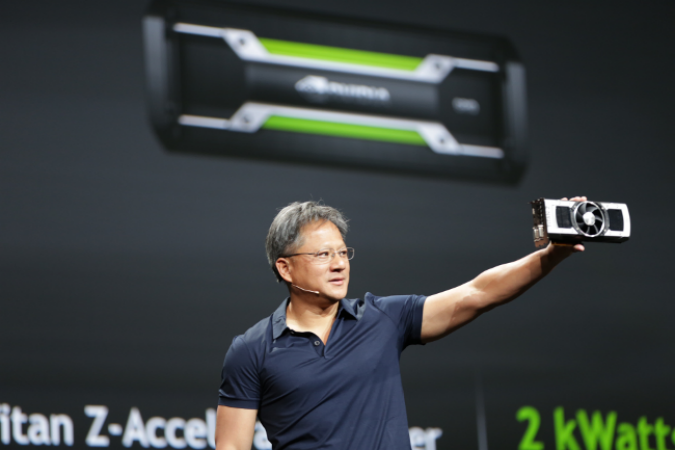
There’s expensive PC hardware, and then there’s this: Nvidia just announced the GeForce Titan Z graphics card, a $3,000 monster that essentially slaps together a pair of high-end graphics processing units (GPU) to create something that’s incredibly powerful, but only attainable by a lucky few, Maximum PC reports.
Nvidia CEO Jen-Hsun Huang made the announcement today at the company’s yearly GPU Technology Conference. Powered by a pair of Kepler GPUs, 12GB of RAM, and 5,760 processing cores, it will most likely require some overly elaborate cooling system to prevent it from melting your PC. According to Nvidia, “Unlike traditional dual-GPU cards, Titan Z’s twin GPUs are tuned to run at the same clock speed, and with dynamic power balancing,” which means that neither GPU creates a performance bottleneck.
Though it’s unclear what speed the Titan Z GPUs will run at, the Titan Black, which uses the same Kepler GPU has a rated clock speed of 889Mhz. To give you an idea of what the Titan Z’s performance could be like, the $1,000 Titan Black – a beast in its own right – has half the RAM and processing cores. Think: Two Titan Black cards, functioning as one.
Instead of focusing on technologies that are on the verge of entering the mainstream, like 4K, Nvidia says the Titan Z is designed with next-generation 5K in mind, along with multi-monitor gaming.
“If you’re in desperate need of a supercomputer that you need to fit under your desk, we have just the card for you,” Huang said. Indeed, if you’re going to build a supercomputer, a Titan Z surely isn’t a bad component to start with, assuming you’ve got the cash for it.
What do you think of the Nvidia GeForce Titan Z? Is $3,000 too much to spend on a graphics card? What’s the most you would spend on one? Sound off in the comments below.


